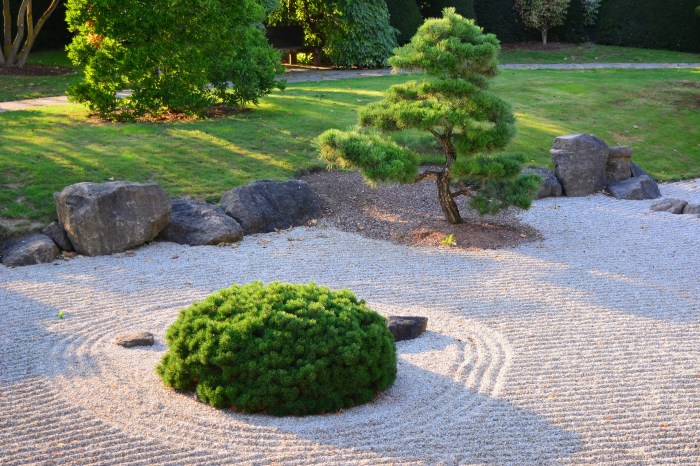In the realm of landscaping, plants for Zen gardens hold a unique place, embodying the principles of balance, harmony, and spiritual connection. Whether you seek to create a serene retreat in your backyard or incorporate elements of Zen aesthetics into your existing garden, this guide will provide you with the knowledge and inspiration you need to cultivate a tranquil oasis.
From the selection of plants that symbolize peace and tranquility to the placement and arrangement that evoke a sense of balance and asymmetry, every aspect of a Zen garden is carefully considered. This guide will delve into the types of plants that are commonly used in Zen gardens, their symbolism, and the principles of design that guide their placement.
We will also provide practical tips on maintenance and care to ensure the health and longevity of your Zen garden.
Types of Plants for Zen Gardens

Zen gardens are characterized by their simplicity and tranquility, and the plants used in these gardens play a significant role in creating this atmosphere. Evergreen plants, with their year-round foliage, provide a sense of stability and permanence, while deciduous plants add seasonal interest and a connection to the changing seasons.
Groundcovers, such as moss and low-growing shrubs, help to define spaces and create a sense of unity. The choice of plants for a Zen garden should be carefully considered, taking into account their symbolism, growth habits, and maintenance requirements.
Plant Placement and Symbolism
The placement of plants in a Zen garden is guided by the principles of asymmetrical balance. This means that the plants are not arranged in a symmetrical manner, but rather in a way that creates a sense of visual interest and harmony.
The symbolism of different plants is also important, with certain plants representing specific qualities or concepts.
For example, bamboo is often used in Zen gardens to represent flexibility and resilience, while pine trees symbolize longevity and strength. By carefully considering the placement and symbolism of plants, it is possible to create a Zen garden that is both aesthetically pleasing and spiritually uplifting.
Maintenance and Care
Proper maintenance is essential to keep the plants in a Zen garden healthy and looking their best. Pruning and shaping are important techniques for maintaining the desired form of plants, while watering and fertilizing ensure that they receive the nutrients they need to thrive.
Controlling pests and diseases is also important to prevent damage to the plants. By following a regular maintenance schedule, it is possible to keep the plants in a Zen garden looking their best for years to come.
Design Considerations, Plants for zen garden
When designing a Zen garden, it is important to consider how the plants will complement the overall design. The choice of plants should be in keeping with the style of the garden, and the placement of plants should create a sense of tranquility and serenity.
Rocks and other elements can be used to complement the plant design, and different styles of Zen gardens, such as the dry landscape garden and the moss garden, have their own unique characteristics. By carefully considering the design elements, it is possible to create a Zen garden that is both beautiful and inspiring.
FAQ Summary: Plants For Zen Garden
What are the essential elements of a Zen garden?
The essential elements of a Zen garden include rocks, sand, water, and plants. Rocks represent mountains, sand represents water, and plants bring life and movement to the garden.
What types of plants are commonly used in Zen gardens?
Plants commonly used in Zen gardens include evergreen trees and shrubs, deciduous trees and shrubs, groundcovers, and bamboos. Evergreens represent longevity and stability, while deciduous plants represent the changing seasons.
How should plants be placed in a Zen garden?
Plants should be placed in a Zen garden according to the principles of asymmetrical balance. This means that the plants should be arranged in a way that creates a sense of balance and harmony, but not symmetry.


